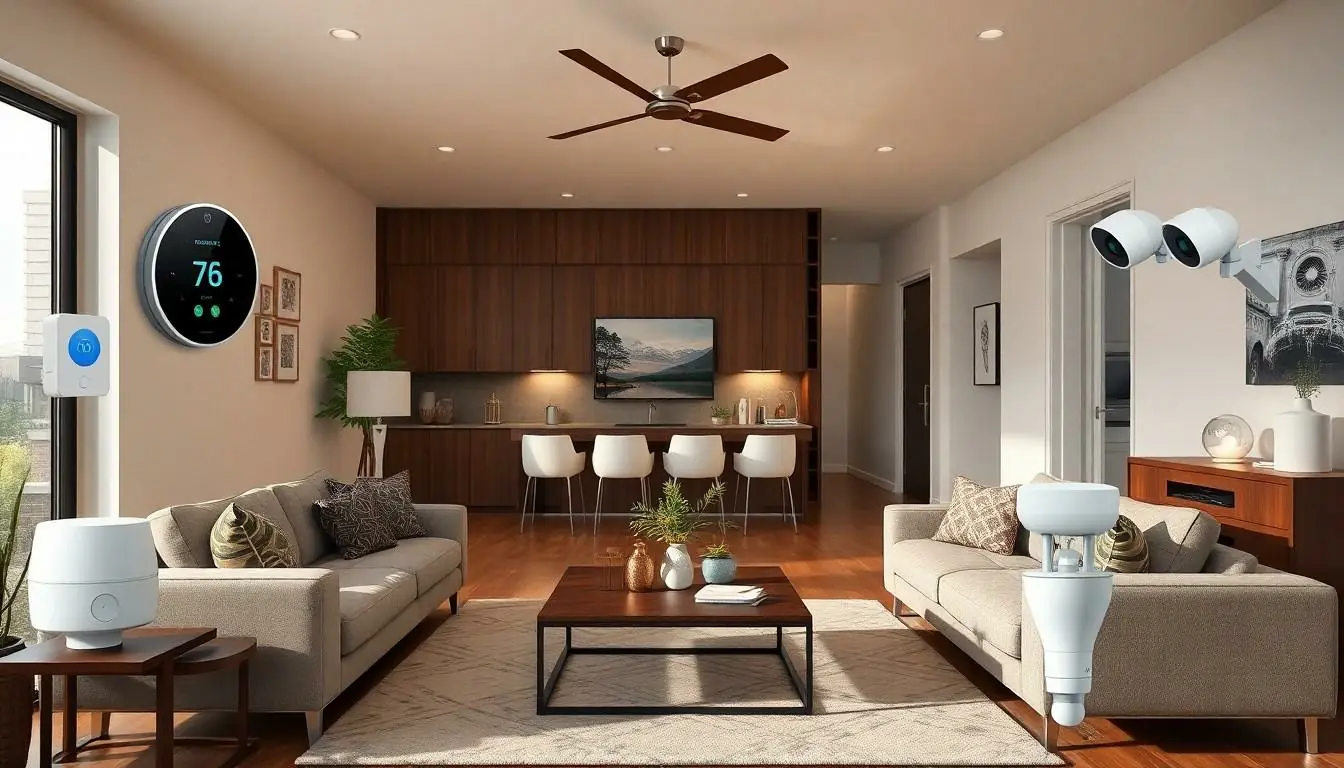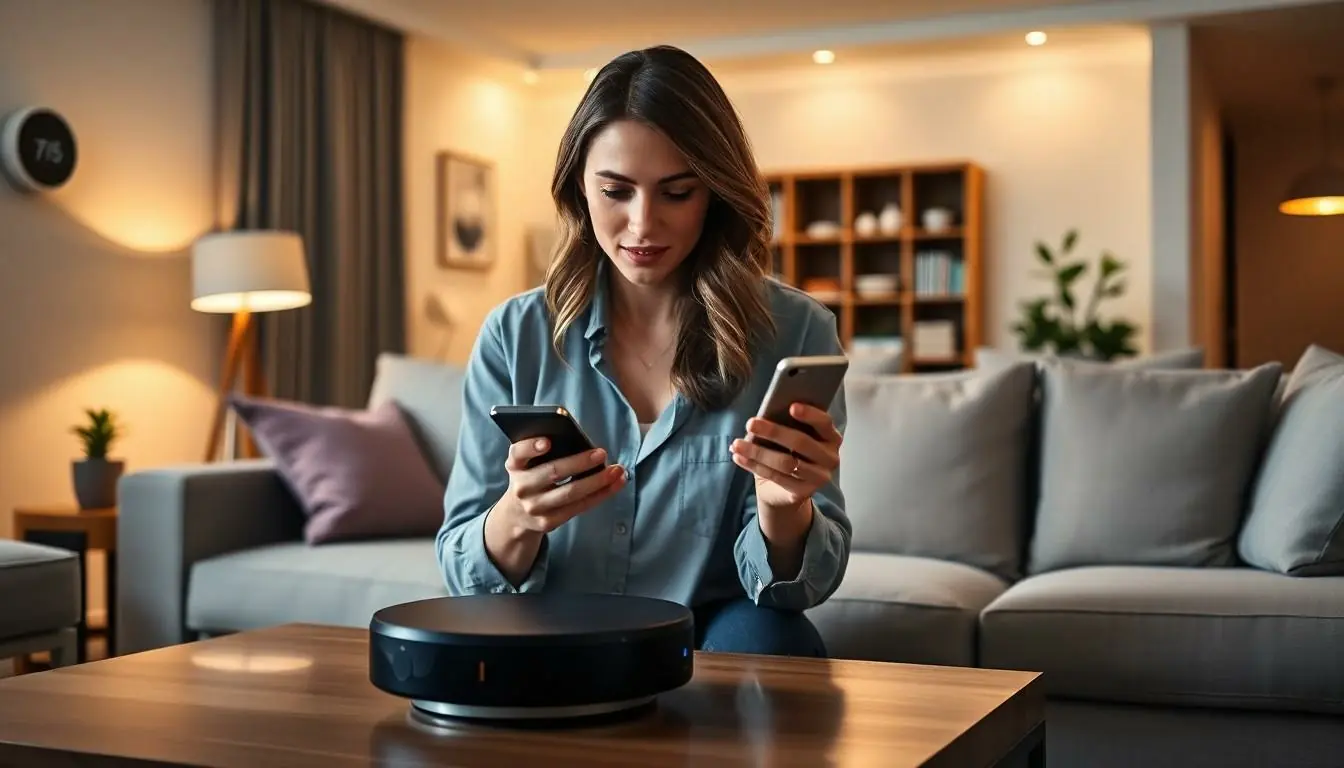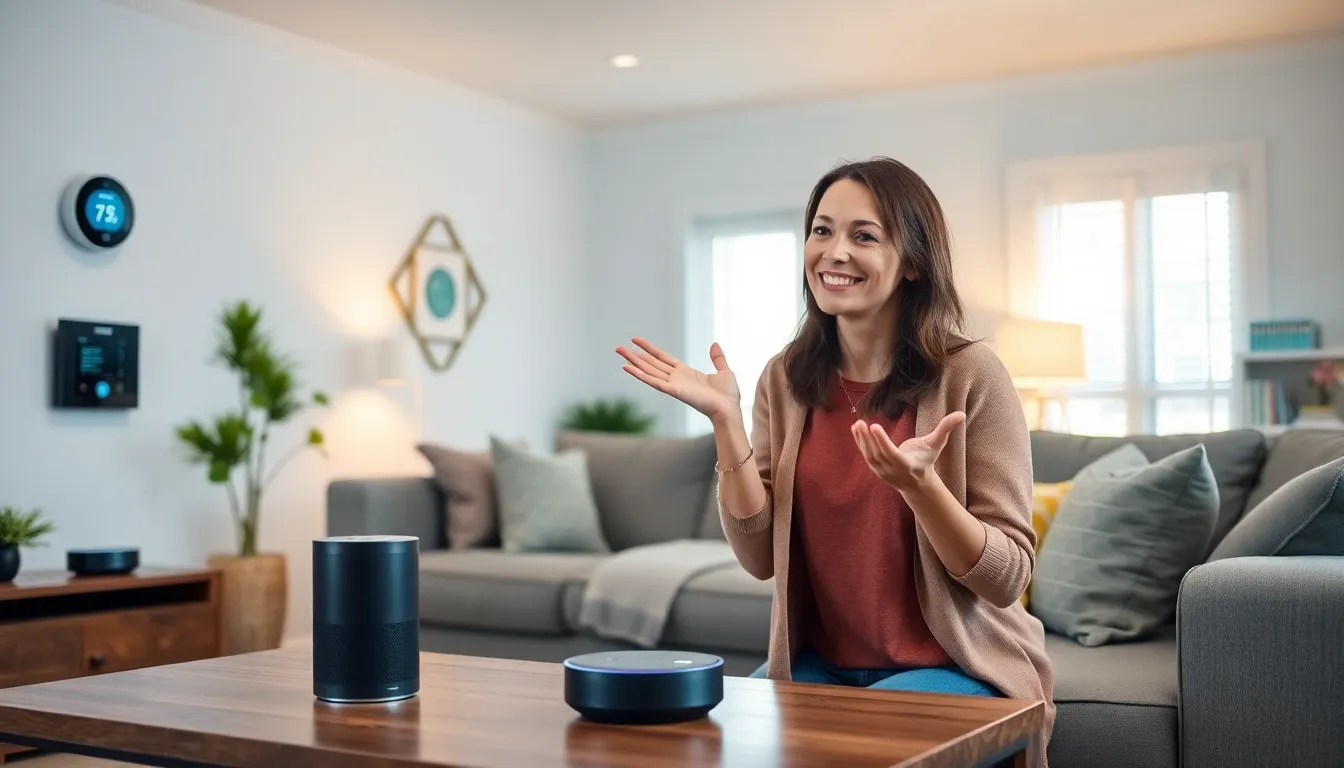Imagine walking into your home and having the lights flicker on, the thermostat adjust to your perfect temperature, and your favorite playlist serenade you—all without lifting a finger. Sounds like magic, right? Welcome to the world of home automation kits, where convenience meets cutting-edge technology.
Table of Contents
ToggleOverview of Home Automation Kits
Home automation kits facilitate seamless control of various household devices. These kits allow users to manage multiple elements such as lighting, heating, and security systems from a single hub or smartphone app. Integration plays a crucial role in enhancing functionality and streamlining user experience.
Several components typically comprise a home automation kit. Smart lights enable users to adjust brightness and color remotely. Smart thermostats optimize energy consumption by learning user preferences. Security cameras and sensors provide real-time monitoring and alerts, ensuring safety and peace of mind.
Compatibility remains a significant factor when selecting a home automation kit. Homeowners should consider devices that work well within existing ecosystems. Systems from leading brands like Google Nest, Amazon Alexa, or Apple HomeKit offer expanded connectivity options. Such compatibility ensures that devices can communicate effectively, enhancing overall performance.
Price points for home automation kits vary widely based on features and brand quality. Basic kits may start around $100, while more advanced setups can exceed $1,000. Evaluating essential requirements helps identify the best budget-friendly options versus high-end features. Many users opt for incremental upgrades, starting with a few devices before expanding their systems.
In addition to convenience, automation kits promote energy efficiency. Automated systems can reduce waste by adjusting settings based on occupancy and time of day. This not only helps decrease utility bills but also supports environmentally friendly practices.
Key Features to Consider

When selecting a home automation kit, several crucial features come into play.
Compatibility with Devices
Compatibility with devices ranks high on the list. Users must ensure the kit works seamlessly with existing gadgets. Many systems support protocols like Wi-Fi, Zigbee, and Z-Wave. A robust home automation kit often integrates with platforms like Google Nest, Amazon Alexa, or Apple HomeKit. Smart bulbs, thermostats, and security cameras should easily connect. Choosing products from the same brand can enhance compatibility throughout the ecosystem.
User-Friendly Interface
A user-friendly interface enhances the overall experience. Simple navigation through an app or web portal contributes to ease of use. Users require intuitive setups that allow quick adjustments for lighting and temperatures. Voice control functionalities provide additional convenience, especially for those with mobility challenges. The best interfaces often feature customization options for personalized control layouts. Clear displays with straightforward icons minimize the learning curve for new users.
Security Features
Security features play a vital role in home automation kits. Surveillance cameras, motion sensors, and smart locks significantly enhance home safety. High-quality kits offer encrypted connections to safeguard data. Users benefit from alerts sent to smartphones, notifying them of unusual activities. Some systems even allow remote monitoring when away from home. A robust automation kit should incorporate multiple layers of security features to ensure peace of mind for homeowners.
Popular Home Automation Kits
Home automation kits simplify household management, showcasing a variety of features that cater to different needs. Below are three popular options, each offering unique benefits to enhance the smart home experience.
Kit 1: Features and Benefits
The SmartThings Hub stands out with its extensive compatibility, working seamlessly with thousands of devices. It allows users to monitor and control lights, locks, and thermostats effortlessly from a single app. Users appreciate its ability to create automated routines based on their daily schedules, improving energy efficiency and convenience. Security features, such as alerts for unusual activity, add an extra layer of safety, making it a top choice for smart home enthusiasts.
Kit 2: Features and Benefits
The Philips Hue Starter Kit focuses on smart lighting, providing users with customizable options for ambiance. It offers a wide range of colors and intensities, catering to various moods and settings. Integration with voice assistants like Amazon Alexa and Google Assistant allows for hands-free operation. The ability to program lighting schedules enhances convenience and energy savings in the long run, making this kit a favorite among users seeking aesthetic enhancements.
Kit 3: Features and Benefits
The Ring Smart Home Security Kit delivers comprehensive security solutions with its suite of devices. This kit includes security cameras, doorbells, and motion sensors, all accessible through a user-friendly app. Real-time notifications help homeowners stay aware of any potential threats. Its compatibility with existing smart home systems enhances overall functionality, while the option to add professional monitoring services provides peace of mind for users who prioritize security.
Installation and Setup Process
Setting up a home automation kit involves several straightforward steps. Begin by reviewing the manufacturer’s instructions, as each kit may have specific requirements.
Next, ensure a stable Wi-Fi connection. A strong network is essential for devices to communicate effectively. Position the hub in a central location within the home, optimizing coverage for all connected devices.
Moving on, users should download the corresponding app for their home automation system. This app enables control and monitoring of devices from a smartphone or tablet.
Installing individual components follows. Start with smart lights, aligning them with existing fixtures. Ensure they connect to the app successfully. Smart thermostats come next, requiring configuration of heating and cooling settings. Users can adjust preferences within the app for personalized comfort.
Security devices like cameras and motion sensors play a crucial role. Position cameras at key entry points and verify motion sensors detect movement correctly. These devices typically alert users through the app, offering enhanced security.
Lastly, set up automation routines within the app. Users can program lights to turn on at sunset or adjust thermostats based on occupancy. Experimenting with different settings enhances efficiency and customization, maximizing the benefits of the system.
During the setup process, troubleshooting may arise. Users can often find solutions in app FAQs or user forums. Engaging with online communities can provide additional tips and best practices for optimal performance.
Home automation kits are transforming the way people interact with their living spaces. By integrating smart technology into everyday life, they offer unparalleled convenience and efficiency. As users explore various options, it’s essential to consider compatibility, ease of use, and security features to create a personalized and secure smart home environment.
With a range of products available to suit different budgets and preferences, homeowners can start small and expand their systems over time. Embracing home automation not only enhances comfort but also contributes to energy savings and improved security, making it a worthwhile investment for anyone looking to modernize their home.





